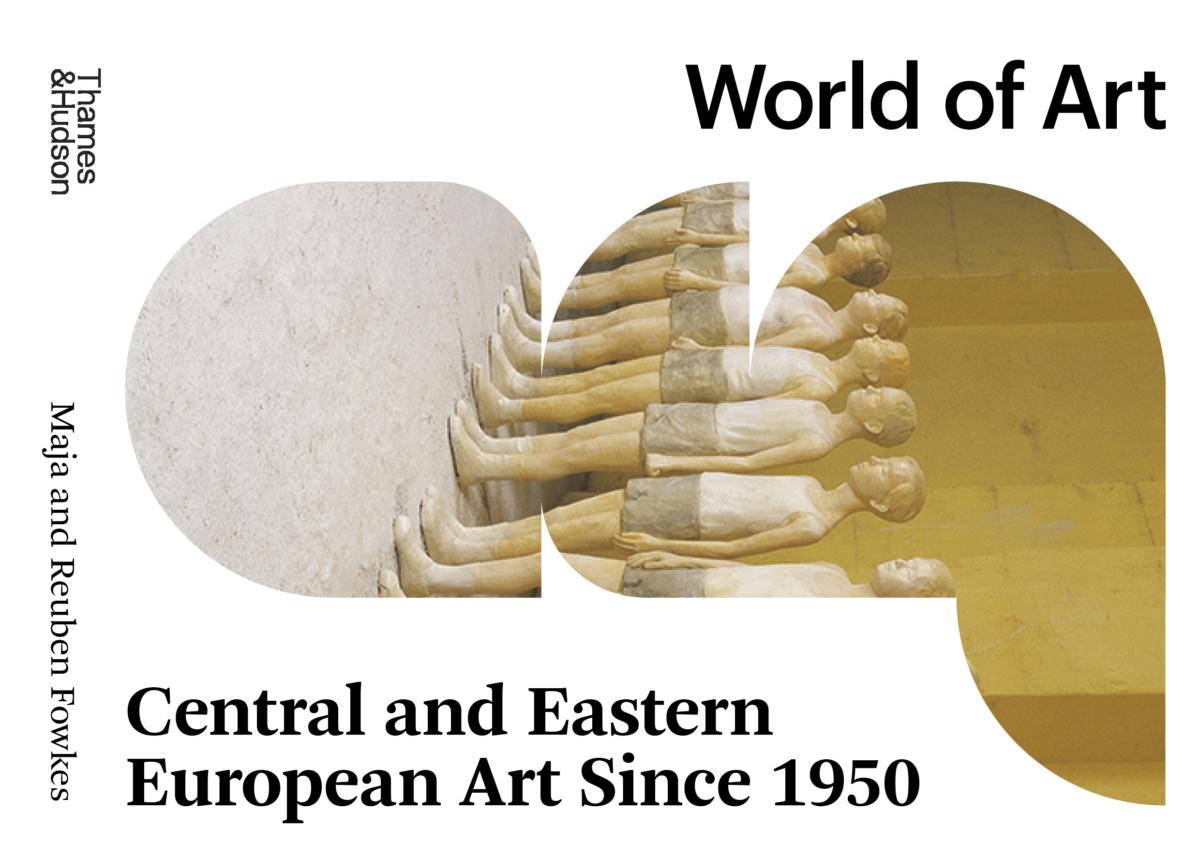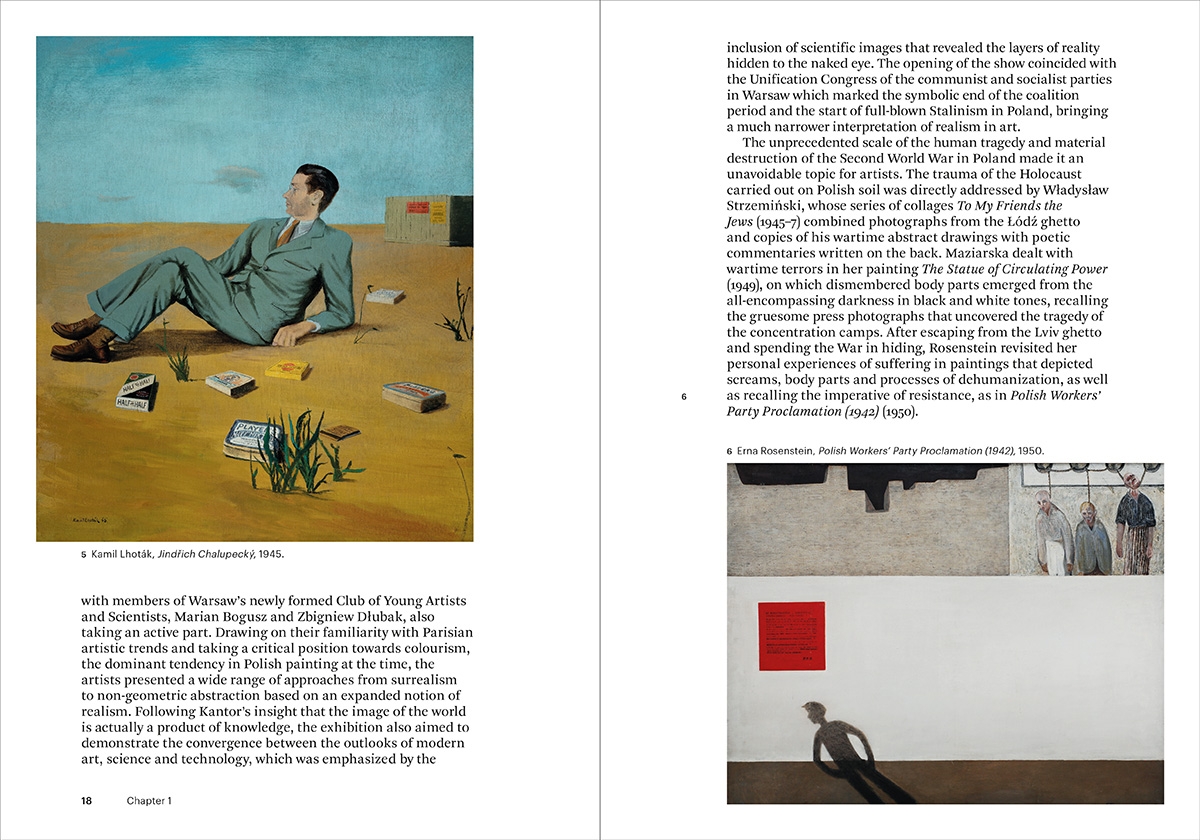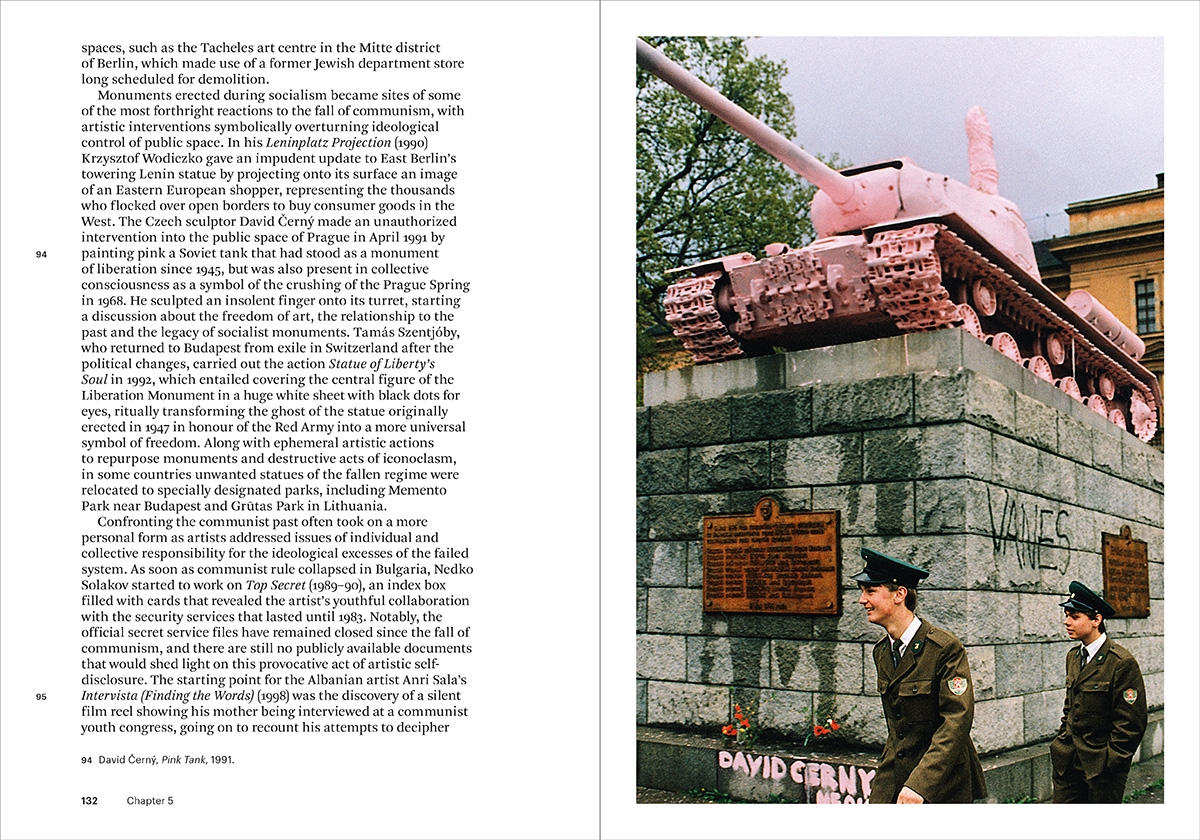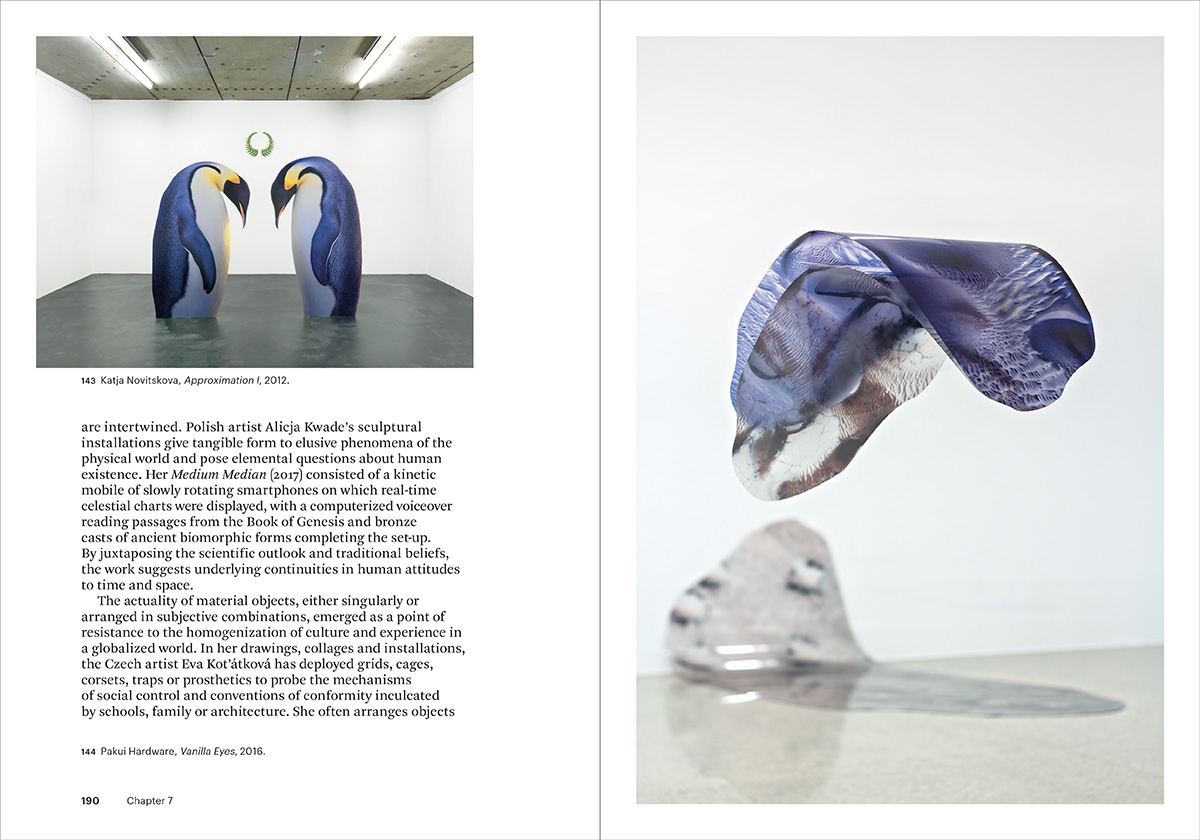Central and Eastern European Art Since 1950. Introduction

The art histories of Central and Eastern Europe are interlaced with dissonant voices, conflicting tendencies and rival proclamations that derive their distinctiveness from exceptional local conditions. This observation is tempered when the lens is finetuned to particular artworks and singular art practices, or the focus of inquiry widened to reveal a web of connecting threads and common attitudes. Artists across the region shared an astute engagement with the intellectual streams of the day, held vivid debates in circles of confidants and carried on ardent communication across disciplinary and geographical boundaries. Commonality could also be detected in a widespread openness towards non-institutionalised forms of activity, predilection for collective work and resourcefulness in finding solutions and spaces for the realisation of ideas. The art scenes of the region existed in a productive tension with mainstream society, rendering them both receptive to demands for the social usefulness of art and insistent on maintaining an autonomous position. Living under communist rule inculcated suspicion of all authorities and elicited initial reserve towards extrinsic pressures, generating a critical, sceptical and subversive artistic stance that extended into post-communist times.
The geographies of the eastern half of the European continent have been more tremulous than many other parts of the world. Dramatic territorial shifts caused by the redrawing of borders in the wake of the Second World War, the formation and disintegration of states, and the rise and fall of political blocs have been accompanied by an incessant regrouping of animosities and alliances. Accepting the capriciousness of territorial determinants, this account deals primarily with the socialist countries of Poland, Czechoslovakia, Hungary and Yugoslavia and their post-communist descendants, periodically extending its coverage to East Germany and Romania, as well as to the Baltics and the rest of the Balkans. This geographical scope reflects also the state of research into the art history of particular countries and periods, as well as ongoing processes of integration into comparative regional narratives. Central and Eastern European art is therefore approached as an inclusive and capacious category that accommodates a range of geopolitical and historical positions, from viewing affiliation with the former Eastern bloc and the socialist past as the determining factor to connecting with deeper cultural trajectories of Central Europe.

In the decades since the demise of the communist system a gradual reordering of the institutional landscape has taken place under the influence of neo-liberal globalisation. This entailed the building of new art infrastructures, founding of regional collections, as well as the opening of art scenes to market forces, accompanied by new forms of artistic precarity. The ethical dilemmas and politically-motivated decisions over whether to exhibit in particular spaces or work with certain galleries remains a live issue for many artists in the region.
In contrast to the elusiveness of its geographies, the timescale of Central and Eastern European art is marked by less ambiguous historical watersheds. The onset of communist rule, which by the early 1950s had brought to the art of the region a short-lived stylistic unison, albeit with enduring institutional consequences, denoted a formative moment in post-war art history. The long period of actually-existing socialism that followed was punctuated by political upheavals that had dramatic repercussions for artistic life across the Eastern Bloc, notably Soviet military intervention in Hungary in 1956 and Czechoslovakia in 1968, as well as the rise of the Solidarity movement and imposition of martial law in Poland in 1981. The fall of communism had a profound impact on Central and Eastern European art that can be understood today not so much in terms of a putative return to the international fold, but rather for the constitutive role of artists from the region in the emergence of a decentred global art world. Furthermore, it is important to note that the epistemologies of national art histories and comparative accounts have also been shaped in the decades since 1989 through critical reassessment of the artistic legacies of the socialist period and contemporary reflections on the artistic identity of the region.
Rather than foregrounding the impact of political histories on Central and Eastern European art, precedence in this account is given to singular art practices and outstanding artworks, situating them in proximity to the movements, styles, phenomena and events that shaped the art scenes of the region since the 1950s. In other words, although the social and political scaffolding is provided, artworks are intentionally not made subservient to larger ideological constructs but considered instead in terms of their distinctive place in art history. Particular attention is devoted to those artists who have achieved the most recognisable careers, as reflected in their standing within national and global art histories, inclusion in museum collections and relevance to contemporary concerns. This account is biased towards experimental art practices that prior to 1989 often developed in tension with officially promoted agendas, as well as to those contemporary approaches that partake in the artistic exchanges of the global art scene. For purposes of nuance, coverage is also occasionally extended to practices that had a more ambivalent position between national culture and the international arena, or that emerged at the intersection of official and unofficial domains, yet still subtly trimmed the art historical fabric of their country.
The highs and lows of political ideology pale in significance when compared with the impact that systemic transformation of the institutional terrain had on Central and Eastern European artworlds. Fundamental changes were introduced at the beginning of the period discussed here, with the imposition of the Soviet model of administrative centralisation and party control of exhibition spaces, art criticism and educational methods, efficiently implemented through funding mechanisms, jury committees and the regulation of artist unions. This restructuring decisively influenced the narrative of regional art histories, forcing experimental artists to seek alternative routes, formats and platforms, a strategy that was likewise adopted by art critics. Socialist art structures and attitudes have also proved remarkably resistant to reform even after the passing of the ideology they were built to serve. In the decades since the demise of the communist system a gradual reordering of the institutional landscape has taken place under the influence of neo-liberal globalisation. This entailed the building of new art infrastructures, founding of regional collections, as well as the opening of art scenes to market forces, accompanied by new forms of artistic precarity. The ethical dilemmas and politically-motivated decisions over whether to exhibit in particular spaces or work with certain galleries remains a live issue for many artists in the region. This account therefore includes required discussion of the changing contours of artworld structures in particular localities.
This geographical scope reflects also the state of research into the art history of particular countries and periods, as well as ongoing processes of integration into comparative regional narratives. Central and Eastern European art is therefore approached as an inclusive and capacious category that accommodates a range of geopolitical and historical positions […].
Closely considered also are the histories of seminal exhibitions that were instrumental in the introduction of new trends and approaches in regional art narratives. These included grand survey shows in prominent venues, such as the series of programmatic exhibitions held across Eastern Europe circa 1950 that inaugurated socialist realism, as well as ground-breaking occasions on which chinks in the armour of the unitary official style first appeared during the period of de-Stalinisation, with the return of abstraction to galleries and museums. Obstructive factors that led to the banning of shows that crossed the lines of party tolerance gave rise to parallel histories of events organised in private or marginal spaces and out of sight of the authorities in the countryside. Such tactics of subversion are strongly associated with the neo-avant-garde of the 1960s and 70s, although the organisation of impromptu actions in makeshift locations was also a characteristic of the alternative art scenes of the last decade of socialism. Reference is also made to the sequence of international exhibitions that beginning in the 1990s laid the ground for comparative and intra-regional perspectives on the art history of Central and Eastern Europe. The achievements of curators from the region are also noted, from developing inventive exhibition formats during the socialist period to curatorial interventions in the global art world.

Some artistic practices call for contextualisation in relation to contemporaneous theoretical debates. Marxism was an inevitable reference point for socialist art scenes, with artists both reacting to the pronouncements of party ideologues and drawing on a variety of leftist positions from the Marxist humanism of the Praxis group in Yugoslavia to more virulent strains of Maoist radicalism. The appeal of psychoanalysis and scientific theories in the immediate post-war period, associated with surrealism and abstract art, was superseded by a new interest in existentialism and phenomenology that resonated with artistic responses to the individualist ethos and technological alienation of modern society. The intellectual preferences of the neo-avant-garde veered between utopian radicalism and new age spirituality, cosmology and Zen Buddhism, while during the 1980s the vogue for post-modernism was a fitting accompaniment to the eclectic revival of historical styles of painting and sculpture. In the post-communist period the free flow of critical theories saw feminist and queer approaches explicitly addressed in contemporary art, supplemented in most recent times by the insights of post-humanist and decolonial thought.
Accelerated social, economic and technological change leading to transformations on a planetary scale also inevitably shaped artistic approaches in the region. The rapid development of infrastructure, cities and heavy industry in the 1950s enacted a distinctive socialist version of industrial modernity, which artists were called on to record and celebrate using traditional methods of painting and sculpture. The technological advances of the 1960s, symbolised by a space race that for a time the communist camp appeared to be winning, fuelled artistic explorations of futuristic scenarios, while also calling forth new approaches to representing a world transformed by scientific innovations, the dawn of the computer age and automatization of work processes. These included experiments with seriality and chance in kinetic art and neo-constructivism, while the rise of a restrained form of consumer culture was reflected in East European pop art. Gradually enthusiasm for the potential of new technologies gave way to dystopian artistic visions of social alienation and concern for the environmental impacts of reckless economic growth. In the wake of the third technological revolution, the possibilities for instantaneous and non-hierarchical communication across virtual realms were intensively explored by net artists during the 1990s. Artists from the region have also been at the forefront in investigating the far-reaching implications of advances in bio-technology and artificial intelligence, while articulating a post-internet aesthetic and critique of online culture.
[…] what could be seen as the paradoxical loss of the historically-privileged status of regional art within the East-West polarity has been compensated for by the emergent role of Central and Eastern Europe as the preeminent model for other art historical regions within a reconfigured global artworld.
The Iron Curtain that divided the continent in two also severed the flow of unhindered exchange between European art scenes, although discreet channels of communication were established across porous barriers and along circumlocutory routes. At the same time such hindrances redirected the focus of international cooperation towards forging links with other geographies of the world. In the Yugoslav context this was part of a third-way foreign policy instigated with the founding of the Non-Alignment Movement with African and Asian allies in 1961. Eastern bloc countries followed a similar trajectory of socialist internationalism with cultural diplomacy encouraged with non-western countries emerging from imperial rule. Within the scope of this inquiry the discussion of artistic exchanges outside of Central and Eastern Europe during socialist times is focussed mainly on cases when such connections were instrumental in the formation of artistic movements and trends in the region or where referenced in the subject matter of artworks. The most recent artistic interest in East-South relations is concentrated on revealing the convergences and discrepancies between the historical experience of far-flung regions, while the globalisation of the artworld and accelerated mobility of artists now require a de-territorialised examination of Central and Eastern European art.
Similarly, this study takes into account the recent decolonial urge to reassemble the fixtures of art historical terminology that historically served the purpose of ensuring the dominance of the western model by patroling the purity of artistic styles. In Central and Eastern European art history, international denominations and their national variants coexist with locally-devised terms for specific phenomena, which are occasionally referenced here, such as surnaturalism in Hungary, new artistic practice in Yugoslavia or critical art in Poland. Certain terms also have a distinct currency in the region, such as socialist realism, an accurate denominator of the official artistic style exported from the Soviet Union circa 1950. However, the scope of this inquiry does not allow for a detailed examination of the resonance of particular terms in local settings and instead opts for a more inclusive approach to terminology that makes regional comparison possible. Art informel, neo-constructivism and pop art are for instance cases in point where there was a relevant and timely correlation between art practices in the region and international designations. Anxiety over correct terminological usage has been recently eased by the recognition that local variants extend the meaning of international terms, while the movements to which they were tendentiously assigned can no longer be exclusively defined with reference to practices and narratives developed in traditional art centres.

The technological advances of the 1960s, symbolised by a space race that for a time the communist camp appeared to be winning, fuelled artistic explorations of futuristic scenarios, while also calling forth new approaches to representing a world transformed by scientific innovations, the dawn of the computer age and automatization of work processes.
This outline of Central and Eastern European art since the 1950s is approached chronologically with chapters devoted to successive decades. Each charts the appearance of particular art practices, embedding them within wider movements and styles, while bringing out correspondences with other comparable art scenes of the region where applicable, or alternatively considering them as irreducible local phenomena. Chapters also include sections illuminating the evolving political climate, art-institutional landscapes, as well as cultural, social and technological developments, in order to aid the contextualisation of specific practices. This study is guided by the established narratives of national art histories, while also opening these up to comparative analysis in thematic blocs where relevant. In that sense, the coverage of the art of the most recent decades is predominantly comparative, reflecting both the hybridity of contemporary practices and the fact that reliable national accounts are still in the making.
Writing an introductory overview of Central and Eastern European art history is no less complex than the immense array of artistic practices it encompasses and inevitably entails encountering along the way numerous discrepancies, antagonisms and irresolvable dilemmas. There is a persistent need to negotiate between separate national art histories and the shared features of an incipient regional account. This is replicated further in relation to wider European and global art narratives, when such an endeavour comes up against the enduring tendency to formulaically locate Central and Eastern European art in a reductive binary opposition to western art. Discrepancies also emerge from those post-colonial perspectives that hastily elide the region within an enveloping Eurocentric position at the expense of its distinctiveness. On the other hand, what could be seen as the paradoxical loss of the historically-privileged status of regional art within the East-West polarity has been compensated for by the emergent role of Central and Eastern Europe as the preeminent model for other art historical regions within a reconfigured global artworld. It is therefore particularly timely to survey the singular contribution of regional artists to transnational art narratives. With an affirmative acknowledgement of local particularities and attentive search for points of cohesion, this book is intended as a gesture towards establishing a consensual account of Central and Eastern European art as it unfolded since the 1950s across this fluid cultural territory.
This text first appeared in Central and Eastern European Art Since 1950 by Maja Fowkes and Reuben Fowkes, 2020. The book is part of the World of Art series published by Thames & Hudson.
Imprint
| Author | Maja Fowkes and Reuben Fowkes |
| Title | Central and Eastern European Art Since 1950 |
| Publisher | Thames & Hudson |
| Published | 2020 |
| Website | thamesandhudson.com/central-and-eastern-european-art-since-1950-9780500204375 |
| Index | Maja Fowkes Reuben Fowkes Thames & Hudson |
